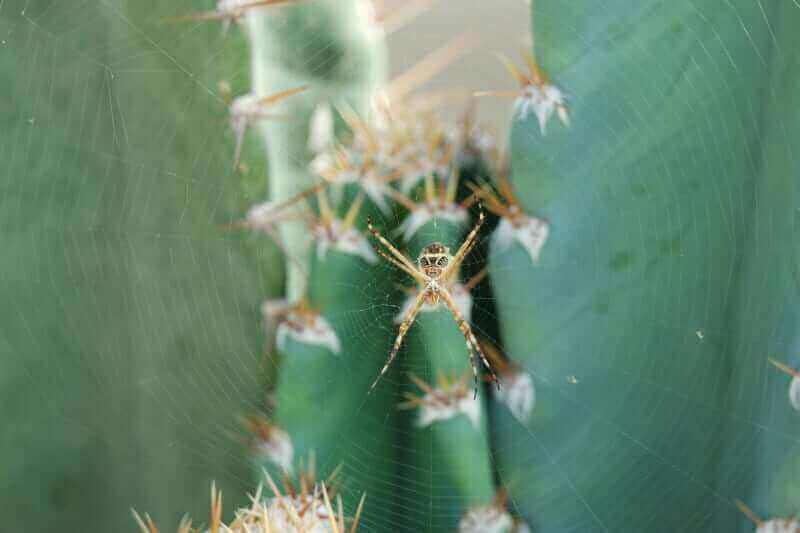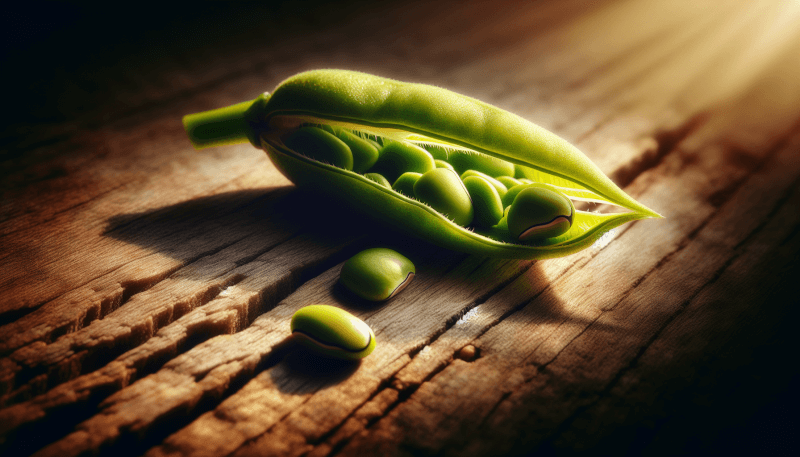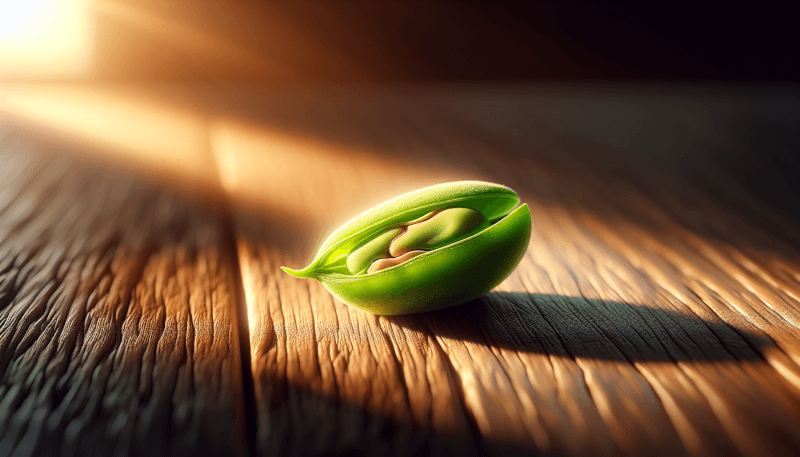If you’re a green thumb looking to transform your backyard into a thriving oasis, then look no further than the Garden Beans Seeds. These extraordinary seeds hold the key to cultivating a bountiful garden filled with the freshest and most flavorful beans you’ve ever tasted. With their vibrant and hearty nature, garden beans are not only a delight to grow, but also a nutritious addition to any meal. Get ready to embark on a journey of planting, nurturing, and harvesting that will bring you closer to nature and the joy of homegrown produce. Get your hands on these garden beans seeds and let the journey begin!

Choosing and Buying Garden Bean Seeds
Deciding on the Type of Garden Beans
When it comes to choosing the right garden bean seeds for your vegetable patch, the first step is deciding on the type of beans you want to grow. Garden beans can be categorized into various types, including bush beans, pole beans, snap beans, string beans, shell beans, lima beans, and fava beans. Each type has its own unique characteristics and growing requirements, so it’s essential to consider factors such as available space, desired yield, and preferred bean characteristics when making your decision.
Selecting a Reliable Seed Supplier
Once you have decided on the type of garden beans you want to grow, the next step is to find a reliable seed supplier. It is crucial to purchase seeds from a reputable source to ensure the quality and viability of the seeds. Look for suppliers that have a good reputation, offer a wide variety of bean seeds, and have positive customer reviews. Reading customer feedback can give you valuable insights into the germination rate and overall satisfaction of the seeds.
Considering Seed Varieties and Characteristics
When choosing garden bean seeds, it’s important to consider the variety and characteristics of the seeds. Different varieties offer varying tastes, textures, and colors, so selecting seeds that align with your culinary preferences is key. Additionally, consider characteristics such as disease resistance, yield potential, and maturity time to ensure a successful harvest. Look for seed packets that provide detailed information about the variety, including specific traits and growing conditions.
Determining the Quantity of Seeds Needed
Before purchasing garden bean seeds, it’s crucial to determine the quantity you’ll need to achieve your desired yield. Consider factors like the size of your garden, the available growing space, and your expected consumption or preservation needs. Keep in mind that beans can be stored for future use, so it’s always a good idea to have some extra seeds on hand. Additionally, consider factors such as the germination rate and potential losses due to pests or environmental factors when determining the quantity of seeds to purchase.
Preparing the Soil for Planting Garden Beans
Selecting the Right Location
Choosing the right location to plant your garden beans is essential for their growth and productivity. Beans thrive in full sun, so select a spot in your garden that receives at least 6-8 hours of direct sunlight each day. Ensure that the location is well-drained to prevent waterlogging and the potential for root rot. Additionally, consider factors such as proximity to water sources and the availability of support structures for climbing varieties.
Clearing and Tilling the Soil
Before planting garden beans, it’s important to prepare the soil by clearing any debris, rocks, or weeds from the area. This will help create a clean and optimal growing environment for your plants. After clearing the area, till the soil to a depth of 6-8 inches using a garden fork or tiller. This process will help loosen compacted soil, improve drainage, and promote root development.
Improving Soil Fertility and Drainage
To ensure healthy and productive garden beans, it’s essential to improve the fertility and drainage of your soil. Incorporate organic matter, such as compost or well-rotted manure, into the soil to enrich its nutrient content and improve its structure. This will enhance water retention and drainage, providing an ideal growing medium for your bean plants. Additionally, consider conducting a soil test to determine the pH level and make any necessary adjustments by adding lime or sulfur.
Ensuring Proper pH Levels
Garden beans thrive in a slightly acidic to neutral soil pH range of 6.0-7.0. To ensure optimal growth and nutrient uptake, it’s important to maintain the proper pH levels in your soil. Conduct a soil test to determine the current pH level, and if it falls outside the recommended range, adjust it accordingly. Adding lime will raise the pH if it is too acidic, while sulfur can be used to lower the pH if it is too alkaline.
Adding Organic Matter and Nutrients
To provide your garden beans with the necessary nutrients for healthy growth and high yields, it’s important to incorporate organic matter and fertilizers into the soil. Mix well-rotted compost or aged manure into the soil before planting to boost its nutrient content. Additionally, consider applying a balanced fertilizer specifically formulated for vegetable gardens. Follow the instructions on the fertilizer label to ensure proper application rates and timing.
Planting Garden Bean Seeds
Choosing the Optimal Time to Plant
The timing of planting your garden bean seeds plays a crucial role in their successful germination and growth. Garden beans are warm-season crops that thrive in temperatures between 70-85°F (21-29°C). Wait until all danger of frost has passed and the soil has warmed up to at least 60°F (15°C) before planting your seeds. In most regions, this typically occurs in the spring when the soil has had a chance to thaw and warm up.
Sowing Seeds Directly or Starting Indoors
Garden beans can be sown directly into the soil or started indoors and transplanted later. Direct sowing is the most common method and is suitable for both bush and pole beans. If you choose to start your seeds indoors, use biodegradable pots or peat pellets to minimize root disturbance during transplantation. Start the seeds 3-4 weeks before the last expected frost date in your area and provide adequate warmth, light, and moisture for optimal germination.
Preparing Seedbeds or Containers
Before sowing your garden bean seeds, it’s important to prepare the seedbeds or containers for planting. If sowing directly into the garden, create shallow furrows spaced 18-24 inches apart for bush beans and 36-48 inches apart for pole beans. For container gardening, select pots or containers that are at least 12 inches deep to accommodate the root growth. Ensure that the containers have drainage holes to prevent waterlogging.
Sowing Seeds at the Right Depth and Spacing
When sowing garden bean seeds, it’s important to plant them at the correct depth and spacing to ensure optimal germination and growth. The general rule of thumb is to plant bush bean seeds about 1-2 inches deep and 2-4 inches apart in rows. For pole beans, plant the seeds 1 inch deep and 4-6 inches apart in rows. If starting seeds indoors, transplant the seedlings outdoors once they have reached a height of 3-4 inches.
Watering and Caring for Newly Planted Seeds
After sowing your garden bean seeds, it’s important to provide them with adequate moisture and care to promote germination and establishment. Water the newly planted seeds immediately after sowing to ensure good soil-to-seed contact. Continue to keep the soil evenly moist but not waterlogged throughout the germination period. Avoid overhead watering, as this can lead to fungal diseases. Additionally, provide protection from pests and extreme weather conditions if needed.
Caring for Growing Garden Bean Plants
Providing Adequate Watering
Watering is a critical aspect of caring for growing garden bean plants. Beans prefer consistent moisture, so it’s important to water them regularly, especially during dry periods. Water the plants deeply, providing enough moisture to penetrate the root zone. Avoid watering the foliage, as this can increase the risk of diseases. Mulching the soil around the plants can help retain moisture and reduce the frequency of watering.
Mulching to Retain Moisture
Mulching your garden bean plants can provide various benefits, including moisture retention, weed suppression, and soil temperature moderation. Apply a layer of organic mulch, such as straw or shredded leaves, around the base of the plants, being careful not to cover the stems. This will help conserve moisture in the soil, reduce weed competition, and create a more favorable growing environment for your beans.
Staking or Providing Support for Climbing Varieties
If you are growing climbing varieties of garden beans, such as pole beans, it’s important to provide support structures for the plants. Install trellises, stakes, or bean poles near the plants to give them something to climb on. This will help prevent the plants from sprawling on the ground and can improve air circulation, reducing the risk of diseases. Train the vines to climb the supports as they grow, gently tying them if necessary.
Fertilizing Regularly
To ensure healthy growth and high yields, it’s important to fertilize your garden bean plants regularly. Beans are moderate feeders and benefit from a balanced, water-soluble fertilizer applied every 2-3 weeks during the growing season. Use a fertilizer specifically formulated for vegetables, following the recommended rates and application instructions. Avoid overfertilization, as this can lead to excessive foliage growth at the expense of bean production.
Controlling Weeds and Pests
Weed control is essential for maintaining the health and productivity of your garden bean plants. Regularly remove weeds from the planting area, being careful not to disturb the root system of the bean plants. Mulching can help suppress weed growth and reduce the need for manual weeding. Additionally, monitor your plants for signs of pests, such as aphids or bean beetles. Use organic or chemical pest control methods as needed to keep pests in check.
Pruning and Training the Plants
Pruning is not typically necessary for garden bean plants, especially bush varieties. However, if you are growing pole beans, occasional pruning can help control the growth and improve airflow around the plants. Remove any dead or damaged vines, as well as excessive side shoots to promote vertical growth. Train the vines to climb the supports throughout the growing season, ensuring they have enough space to grow and access sunlight.

Harvesting Garden Bean Pods
Identifying Bean Pods Ready for Harvest
Knowing when to harvest your garden bean pods is crucial for optimal flavor and tenderness. Beans are usually ready for harvest when the pods are well-filled and have reached their full size but are still tender. Harvest bush beans when the pods are about 4-6 inches long and snap easily when bent. Pole beans are best harvested when the pods are about 6-8 inches long. Avoid leaving the pods on the plants for too long, as they can become tough and fibrous.
Harvesting Methods and Techniques
There are different methods and techniques you can use to harvest your garden bean pods. For bush beans, simply grasp the pod with one hand and use the other hand to snap it off the plant. For pole beans, gently pull the pod upwards to detach it from the vine. Alternatively, use garden scissors or pruners to cut the pods from the plants. Harvest regularly to promote continuous production and prevent the plants from going to seed.
Regularly Checking and Harvesting to Promote Growth
Regularly checking your garden bean plants and harvesting the mature pods is essential for promoting continuous growth and production. Leaving mature pods on the plants can signal to the plants that they have completed their life cycle, resulting in a decline in productivity. Aim to harvest your beans every 2-3 days, especially during the peak harvesting period. This will encourage the plants to produce new flowers and pods, ensuring a bountiful harvest.
Storing and Preserving Bean Pods
If you have harvested more garden bean pods than you can immediately use, there are various ways to store and preserve them for later consumption. Fresh beans can be kept in the refrigerator for up to a week in a moisture-proof bag or container. Alternatively, blanch the beans in boiling water for a few minutes and then freeze them in airtight freezer bags or containers. Canning and pickling are other popular methods for preserving garden bean pods.
Saving and Storing Garden Bean Seeds
Planning for Seed Saving
Saving and storing garden bean seeds allows you to preserve desirable traits and continue growing your favorite varieties in future seasons. Planning for seed saving involves selecting the appropriate plants, ensuring proper isolation, and avoiding cross-pollination with other bean varieties. Before planting, decide which plants you want to save seeds from, taking into consideration characteristics such as yield, flavor, disease resistance, and adaptability to your local climate.
Selecting the Best Plants for Seed Saving
When selecting plants for seed saving, choose the healthiest, most vigorous, and productive specimens that best represent the desired traits of the variety. Avoid plants with signs of disease, insect damage, or poor growth. Look for plants with good pod set, uniformity, and the desired taste and texture. It’s also advisable to save seeds from multiple plants to maintain genetic diversity and improve the overall resilience of your bean population.
Allowing Pods to Mature and Dry
To save bean seeds, it’s important to allow the pods to mature and dry on the plants. Leave a few healthy and fully formed pods on the selected plants until they have turned brown and begun to dry out. The pods should feel crisp and papery to the touch. Avoid picking the pods too early, as this may result in underdeveloped or non-viable seeds. Monitor the plants regularly and harvest the dried pods before they split open and scatter the seeds.
Extracting and Cleaning the Bean Seeds
To extract the bean seeds from the dried pods, gently twist or open the pods to release the seeds. Separate the seeds from the chaff and any dried plant material. You can do this by rubbing the seeds between your hands or gently blowing on them to remove the lighter debris. Once separated, ensure that the seeds are fully dry before storing to prevent molding or rotting. It’s a good practice to do a germination test before storing the seeds.
Storing Seeds Properly for Future Use
To maintain the viability of your garden bean seeds, it’s essential to store them properly. Place the fully dried and cleaned seeds in airtight containers, such as glass jars or moisture-proof seed bags. Store the containers in a cool, dry, and dark location, such as a pantry or refrigerator. Label the containers with the variety and date of collection to keep track of the seed’s age. Properly stored bean seeds can remain viable for several years.

Common Problems and Solutions for Garden Beans
Identifying and Diagnosing Common Bean Issues
Garden beans can face various challenges, including diseases, pests, nutritional deficiencies, and environmental stress factors. Common bean issues include fungal diseases like powdery mildew and rust, insect pests such as aphids and bean beetles, nutritional deficiencies like nitrogen or potassium deficiency, and environmental stress factors like drought or extreme heat. Regularly inspect your plants for any signs of distress, such as leaf discoloration, wilting, or insect damage, and take appropriate measures for identification and diagnosis.
Preventing and Managing Diseases
To prevent and manage diseases in garden beans, it’s important to practice good cultural and sanitation practices. Plant disease-resistant varieties, rotate crops annually, and avoid planting beans in areas where related crops have recently been grown. Provide adequate spacing between plants to improve air circulation and reduce the risk of fungal diseases. Water your plants at the base to avoid wetting the foliage, and remove and destroy any infected plant material to prevent the spread of diseases.
Controlling Pests and Insects
Controlling pests and insects is an important part of maintaining the health and productivity of your garden bean plants. Regularly inspect your plants for signs of pest infestation, such as chewed leaves or damage to the pods. Use natural or organic pest control methods whenever possible, such as introducing beneficial insects or using homemade insecticidal soaps. In severe cases, chemical insecticides may be necessary, but always follow the instructions and precautions provided by the manufacturer.
Dealing with Nutritional Deficiencies
Nutritional deficiencies in garden bean plants can affect their growth, yield, and overall health. Common deficiencies include nitrogen, phosphorus, potassium, and micronutrients like iron and magnesium. To address nutritional deficiencies, conduct a soil test to identify the specific nutrient deficiencies and adjust the fertilization program accordingly. Use fertilizers with the appropriate nutrient balance and apply foliar sprays if necessary. Regularly monitor the plants for any signs of nutrient deficiency and take appropriate action.
Addressing Environmental Stress Factors
Environmental stress factors, such as drought, excessive heat, or cold temperatures, can impact the growth and productivity of garden bean plants. To address these stress factors, provide adequate irrigation during dry periods, especially when the plants are flowering and producing pods. Consider using mulch to conserve soil moisture and regulate soil temperature. Protect your plants from extreme heat or cold by providing shade or using row covers. Monitor weather conditions and take preventive measures to minimize stress on your bean plants.
Bean Companion Plants for Enhanced Growth
Choosing Beneficial Companion Plants
Companion planting can benefit your garden bean plants by attracting beneficial insects, repelling pests, and improving soil fertility. Some beneficial companion plants for beans include marigolds, nasturtiums, and sunflowers, which can attract pollinators and repel harmful pests. Additionally, herbs like basil, rosemary, and dill can enhance the flavor of beans while deterring pests. Planting beans with compatible vegetables and herbs in a diversified garden can create a thriving ecosystem and help balance pest populations.
Improving Soil Fertility with Nitrogen Fixing Plants
Beans are known for their ability to fix atmospheric nitrogen into the soil, making them excellent nitrogen contributors. To enhance soil fertility, consider planting nitrogen-fixing plants, such as legumes, in close proximity to your garden bean plants. These could include clover, alfalfa, or vetch. As the nitrogen-fixing plants grow, they release nitrogen into the soil, benefiting the neighboring bean plants and reducing the need for supplemental fertilization.
Planting Deterrent Companion Plants
Companion plants can also help deter pests and insects that may damage your garden bean plants. For example, planting aromatic herbs like thyme, oregano, or sage can help repel pests such as bean beetles or aphids. Onions, garlic, and chives are also effective deterrents for many common pests. Interplanting these companion plants among your garden beans can help create a natural barrier and reduce pest infestations.
Utilizing Vertical Space with Climbing Plants
If space is limited in your garden, consider growing climbing plants alongside your garden beans to maximize vertical space. Plants such as cucumbers, tomatoes, or even pole beans can be trained to climb trellises or stakes, creating a visually appealing and functional garden space. This technique not only allows you to grow more plants in a smaller area but also improves air circulation, reduces the risk of diseases, and makes harvesting easier.

Exploring Different Garden Bean Varieties
Bush Beans
Bush beans are compact, non-climbing plants that reach an average height of 1-2 feet. They are relatively easy to grow and do not require additional support structures. Bush beans come in various colors and shapes, including green, yellow, purple, and even multi-colored varieties. They tend to have a concentrated harvest period, making them suitable for small gardens or those who prefer a large quantity of beans for canning or freezing.
Pole Beans
Pole beans, also known as climbing beans, are vining plants that require support structures such as trellises, stakes, or bean poles. They can reach heights of 6-10 feet or more, making them a great option for vertical gardening. Pole beans typically produce a continuous harvest throughout the growing season, allowing for a longer harvest period compared to bush beans. They come in various colors and flavors and are popular for their tenderness and taste.
Snap Beans
Snap beans, also known as green beans or string beans, are harvested when the pods are still immature and the seeds inside are not fully developed. They are known for their crisp texture and juicy flavor, making them a popular choice for fresh consumption. Snap beans can be either bush or pole varieties and come in various lengths and colors. They are versatile in the kitchen and can be steamed, stir-fried, sautéed, or added to salads or casseroles.
String Beans
String beans are a type of snap bean characterized by a fibrous “string” that runs along the length of the pod. Modern varieties of string beans have been developed to eliminate the string, making them easier and more enjoyable to eat. Like snap beans, string beans can be either bush or pole varieties and come in different colors and lengths. They are best harvested when the pods are young, tender, and free from stringiness.
Shell Beans
Shell beans, also known as shelling beans or dry beans, are grown specifically for the mature seeds inside the pods. Unlike snap beans, the pods of shell beans are leathery and inedible. Shell beans are harvested when the pods have dried and turned brown on the plants. The mature beans can be used fresh or dried for later use. Shell beans come in various sizes, shapes, and colors and are known for their nutritional value and rich flavor.
Lima Beans
Lima beans, also known as butter beans, are large, flat, and creamy-white beans with a distinct buttery flavor. They are heat-loving plants that require a long, warm growing season to reach maturity. Lima beans can be either bush or pole varieties and come in different sizes, including baby lima beans and large lima beans. They are a popular choice for soups, stews, and side dishes and can be frozen or canned for long-term storage.
Fava Beans
Fava beans, also known as broad beans, are large, flat, and green beans that grow in thick, leathery pods. They are considered cool-season vegetables and are often grown in early spring or fall. Fava beans have a rich, nutty flavor and meaty texture. They are a staple in Mediterranean and Middle Eastern cuisines, where they are used in various dishes, including soups, stews, salads, and purees. Fava beans are known for their high protein content and are often favored by vegetarian or vegan diets.
Tips for Maximizing Garden Bean Yield
Optimizing Plant Density
To maximize your garden bean yield, it’s important to optimize the plant density and spacing. Planting your beans too closely together can lead to overcrowding, poor airflow, and increased disease susceptibility. Conversely, spacing plants too far apart can result in wasted space and reduced overall yield. Follow the recommended spacing guidelines for the specific bean variety you are growing. This will ensure that the plants have enough space to grow and access sunlight while maximizing the use of available garden space.
Implementing Crop Rotation
Crop rotation is a valuable practice for preventing soil-borne diseases and replenishing soil nutrients. Avoid planting garden beans or other related legumes in the same spot year after year to reduce the risk of soil-borne diseases and pests that can build up in the soil. Rotate your bean crops with other non-legume vegetables to break disease cycles and improve soil health. A three-year rotation cycle is generally recommended between bean plantings in the same area.
Applying Proper Pruning Techniques
Pruning garden bean plants is not typically necessary, especially for bush varieties. However, occasional pruning of pole beans can help control their growth and improve air circulation. Remove any dead or damaged vines, as well as excessive side shoots. Prune selectively to maintain a manageable plant size and promote vertical growth. Avoid excessive pruning, as this can reduce the overall yield of the plants.
Avoiding Overwatering
While garden beans require consistent moisture, overwatering can have detrimental effects on their growth and productivity. Overly wet soil can lead to root rot and the development of fungal diseases. Water your plants deeply but infrequently, providing enough moisture to penetrate the root zone. Avoid overhead watering, as this can increase the risk of diseases. Monitor soil moisture levels and use mulch to help retain moisture and reduce the frequency of watering.
Harvesting Regularly to Encourage More Production
Regularly harvesting your garden bean pods is important for encouraging continuous production and preventing the plants from going to seed. Leaving mature pods on the plants can signal to the plants that they have completed their life cycle, resulting in a decline in productivity. Aim to harvest your beans every 2-3 days, especially during the peak harvesting period. This will promote the development of new flowers and pods, ensuring a bountiful harvest throughout the growing season.


